ভূমিকা
Roofing roll forming machines play a crucial role in the construction industry by manufacturing metal roof panels with precision and efficiency. These machines automate the process of creating uniformly shaped roof panels, providing a cost-effective solution for roofing contractors and manufacturers. If you’re considering investing in a roofing roll forming machine, understanding the factors that influence their prices and the different types available is essential. In this article, we will explore the various aspects of roofing roll forming machine prices and provide valuable insights to help you make an informed decision.
Understanding Roofing Roll Forming Machines
Roofing roll forming machines are specialized equipment designed to transform coils of metal into finished roof panels of specific shapes and sizes. The process involves feeding the metal coil into the machine, where it passes through a series of rollers that gradually shape it into the desired profile. The formed roof panels are then cut to the required lengths and can be further processed for additional features like corrugation or seam locks. These machines offer high precision and can produce roof panels with consistent quality and dimensional accuracy.
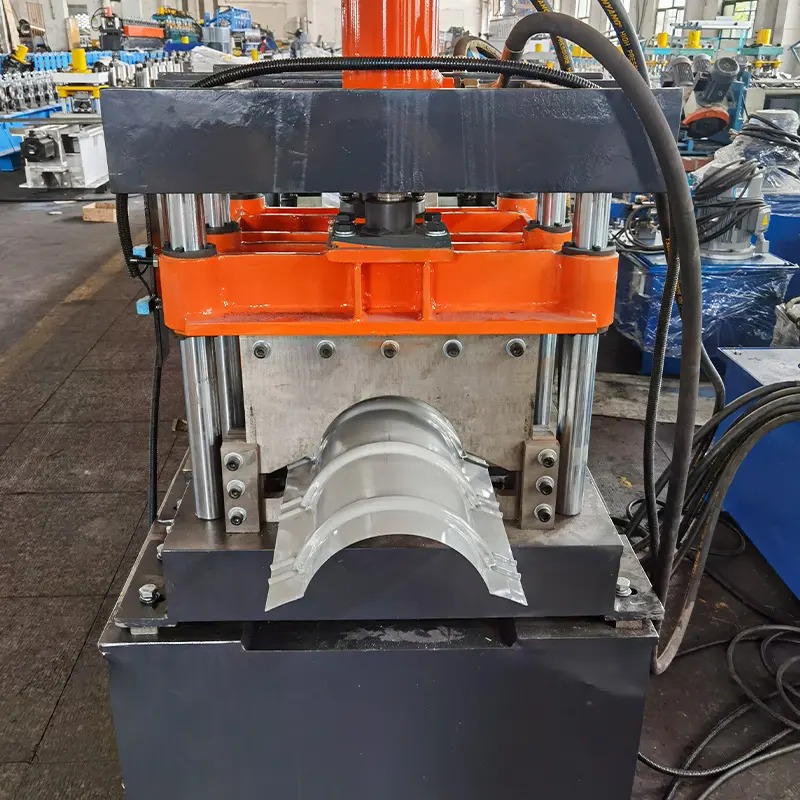
Factors Affecting roofing roll forming machine price
Several factors contribute to the pricing of roofing roll forming machines. By understanding these factors, you can evaluate the cost implications and find the right machine that meets your requirements. Here are some key factors to consider:
Quality and Durability
The quality and durability of a roofing roll forming machine are crucial factors affecting its price. Machines constructed with high-quality materials and components tend to be more expensive but offer better longevity and performance. Investing in a durable machine can save costs in the long run, as it reduces maintenance and replacement expenses.
Machine Specifications and Features
Different roofing roll forming machines come with varying specifications and features, which directly influence their prices. Machines capable of producing complex profiles or handling thicker and wider coils generally have higher price tags. Additionally, advanced features like computerized controls, automatic stackers, and integrated cutting systems can increase the cost of the machine.
Brand and Manufacturer Reputation
The brand and reputation of the manufacturer also play a significant role in determining the price of a roofing roll forming machine. Established and reputable manufacturers often charge premium prices due to their track record of delivering high-quality machines and providing excellent customer support. While opting for a well-known brand may come at a higher cost, it can provide peace of mind and assurance of reliable performance.
Additional Accessories and Customization Options
Certain accessories and customization options can enhance the functionality and versatility of roofing roll forming machines. These may include decoilers, embossing units, multiple profile sets, or custom tooling. While these add-ons may increase the overall price, they offer greater flexibility in producing a wide range of roof profiles and designs.
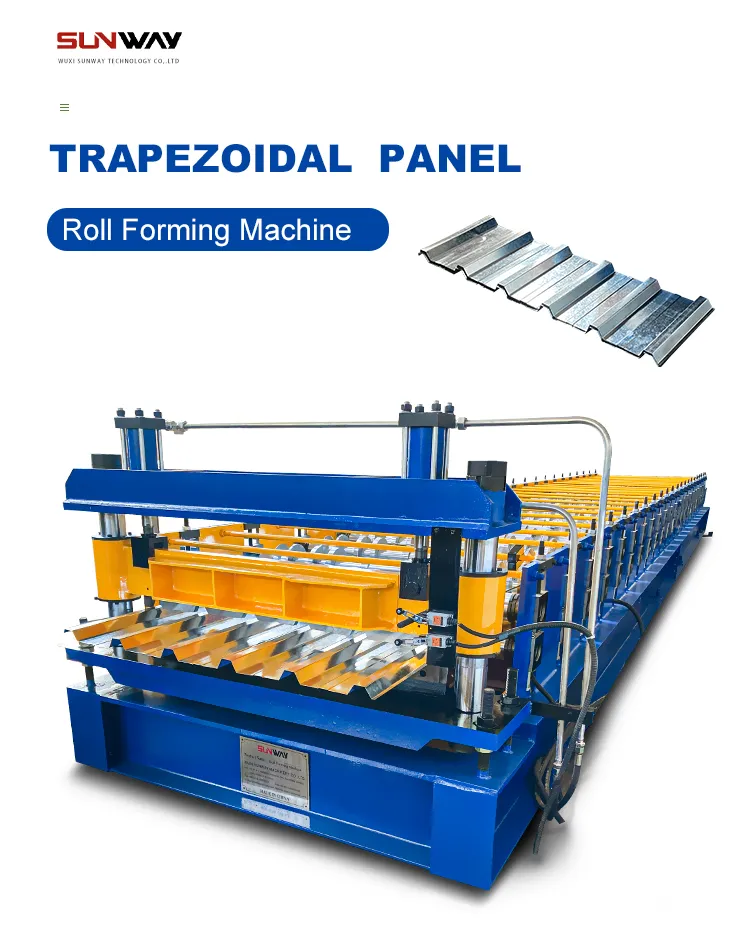
ছাদ রোল গঠন মেশিনের প্রকার
Roofing roll forming machines are available in different types, each suited for specific roofing applications. Let’s explore the most common types of machines used in the industry:
Corrugated Roofing Roll Forming Machines
Corrugated roofing roll forming machines are designed to produce corrugated metal panels, which are widely used for roofing and siding applications. These machines create continuous wave-like patterns on the metal, resulting in durable and visually appealing roof panels. Corrugated roofing roll forming machines are available in various sizes and configurations to meet different production requirements.
Standing Seam Roofing Roll Forming Machines
Standing seam roofing roll forming machines are used to manufacture standing seam roof panels, known for their sleek and modern appearance. These panels have interlocking seams that provide enhanced weather resistance and structural integrity. Standing seam roofing roll forming machines offer options for different seam profiles, widths, and seam heights to cater to diverse architectural designs.
Metal Tile Roofing Roll Forming Machines
Metal tile roofing roll forming machines specialize in producing metal roof panels that mimic the appearance of traditional clay or concrete tiles. These machines create individual metal tiles with various shapes and surface textures, providing an aesthetic alternative to conventional roofing materials. Metal tile roofing roll forming machines are often customizable to match specific tile designs and color preferences.
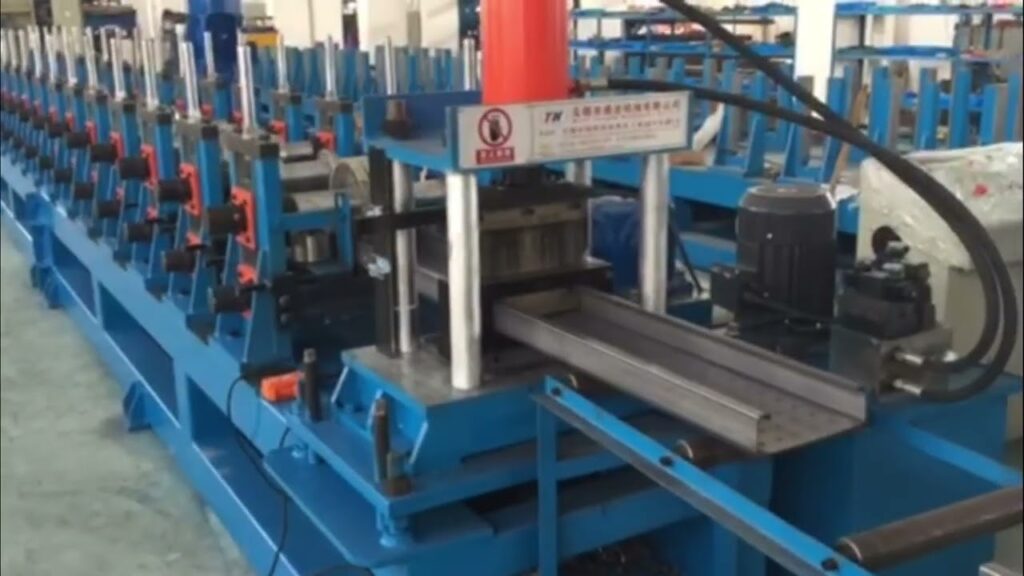
Comparing Different Roofing Roll Forming Machines
When choosing a roofing roll forming machine, it’s essential to compare different models and understand their features and performance. Here are key aspects to consider during the comparison process:
Price Range and Variations
Roofing roll forming machines come in a range of prices depending on their complexity and capabilities. Understanding the price range and variations will help you determine the machine that fits your budget without compromising on essential features.
Machine Performance and Speed
Assessing the performance and speed of the machines is crucial to ensure efficient production. Look for machines that offer high production speeds while maintaining consistent quality. Higher speed machines may be more expensive but can significantly improve your overall productivity.
Material Compatibility and Versatility
Consider the types of materials the machine can handle and the range of profiles it can produce. A versatile machine that can accommodate various metal thicknesses and profiles will offer more flexibility in meeting diverse project requirements.
Ease of Use and Maintenance
Opt for a machine that is user-friendly and requires minimal training for operation. Additionally, inquire about the maintenance requirements and availability of spare parts. Machines with accessible components and comprehensive after-sales support can ensure smooth operations and reduce downtime.
Where to Buy Roofing Roll Forming Machines
After evaluating your requirements and comparing different machines, you need to determine the most suitable source for purchasing a roofing roll forming machine. Here are some common options:
Directly from Manufacturers
Buying directly from manufacturers provides the advantage of dealing with the source. You can expect better technical support, customized solutions, and direct communication. However, this option may have longer lead times and potentially higher prices.
Local Suppliers and Distributors
Local suppliers and distributors often offer convenience and localized support. They may carry a wide range of roofing roll forming machines from different manufacturers, allowing you to compare options in one place. They can provide guidance on machine selection and may offer installation and maintenance services.
Online Marketplaces
Online marketplaces provide a convenient platform to explore and purchase roofing roll forming machines. Platforms like Alibaba, eBay, and Amazon offer a vast selection of machines from various sellers and manufacturers. However, exercise caution and thoroughly research sellers’ reputations and customer reviews before making a purchase.
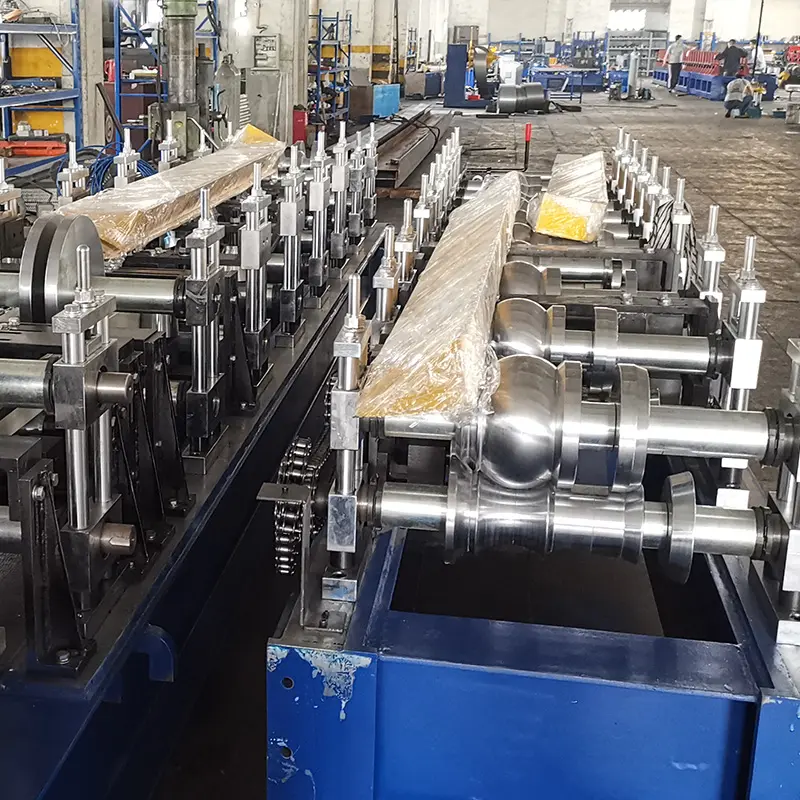
Tips for Choosing the Right Roofing Roll Forming Machine
To ensure you select the most suitable roofing roll forming machine for your needs, consider the following tips:
Assessing Your Production Needs
Evaluate your production requirements, including the expected output, desired profiles, and material specifications. This assessment will help you narrow down the machine options that align with your specific needs.
Researching Different Brands and Models
Conduct thorough research on different brands and models available in the market. Consider factors such as machine performance, durability, customer reviews, and manufacturer reputation. This information will assist you in making an informed decision.
Considering Long-Term Support and Service
Ensure that the manufacturer or supplier offers comprehensive support and after-sales service. This includes technical assistance, spare parts availability, and maintenance services. A reliable support system is essential to keep your machine running smoothly in the long term.
Requesting Price Quotes and Comparisons
Request price quotes from multiple manufacturers or suppliers to compare costs and features. Be sure to inquire about any additional expenses, such as shipping or installation fees. Consider the overall value rather than solely focusing on the initial price.
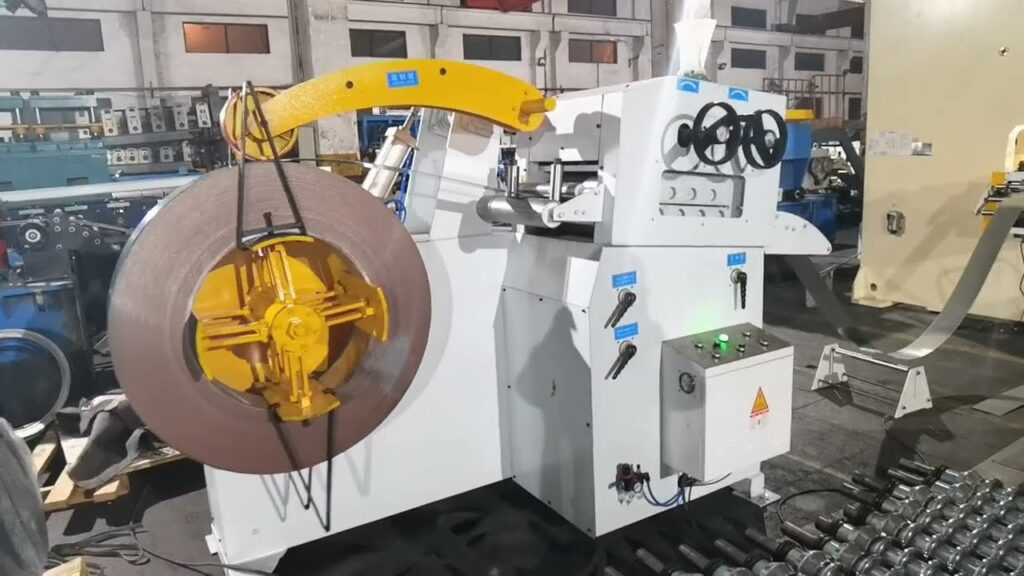
উপসংহার
Investing in a roofing roll forming machine can significantly enhance the efficiency and quality of your roofing production. Understanding the factors influencing the price, the types of machines available, and the comparison criteria will empower you to make an informed decision. Remember to assess your production needs, research different brands, and consider long-term support before finalizing your purchase. With the right roofing roll forming machine, you can streamline your operations and meet the demands of the roofing industry.
FAQs
1. Are roofing roll forming machines suitable for all types of metal roofing materials?
Roofing roll forming machines can handle a wide range of metal roofing materials, including steel, aluminum, and copper. However, it’s essential to check the machine’s specifications and capabilities to ensure compatibility with your desired material.
2. Can roofing roll forming machines produce customized roof profiles?
Yes, many roofing roll forming machines offer customization options. They can be equipped with interchangeable tooling systems to produce various roof profiles and designs according to your specific requirements.
3. How long does it take to set up and install a roofing roll forming machine?
The setup and installation time can vary depending on the machine complexity and your site’s readiness. It’s advisable to consult with the manufacturer or supplier to get a clear estimate of the installation timeline.
4. Are there any safety considerations when operating a roofing roll forming machine?
Yes, operating a roofing roll forming machine involves certain safety considerations. It’s important to follow all safety guidelines provided by the manufacturer, including wearing appropriate personal protective equipment and ensuring proper training for machine operators.
5. Can I get financing options for purchasing a roofing roll forming machine?
Many manufacturers and suppliers offer financing options or leasing programs to facilitate the purchase of roofing roll forming machines. It’s recommended to inquire about these options and evaluate their terms and conditions to determine the best fit for your financial situation.
Frequently Asked Questions (FAQ)
1) What is a realistic price range for a roofing roll forming machine in 2025?
- Entry-level single-profile lines typically range from $45,000–$85,000; mid-tier standing seam or corrugated lines with automation $90,000–$180,000; premium cassette/quick-change systems with servo flying shear and inline QC $190,000–$400,000+. Prices vary with coil width, thickness range, line speed, and automation.
2) Which features have the biggest impact on Roofing Roll Forming Machine Prices?
- Quick-change cassette tooling, servo-driven flying shear, PLC/HMI with recipe management, automatic stackers, high-capacity decoilers with hydraulic threading, inline rib/embossing, and integrated punching/notching add the most cost but greatly improve throughput and flexibility.
3) How do total cost of ownership (TCO) considerations affect the purchase decision?
- Beyond purchase price, factor in energy use (kWh/1,000 m), scrap rates, changeover time, preventive maintenance intervals, spare parts pricing, and operator training. A higher-priced line can deliver lower TCO via reduced scrap, faster changeovers, and better uptime.
4) What financing or acquisition models are common in 2025?
- OEM financing (36–60 months), equipment leases, and “production-as-a-service” contracts tied to output meters are increasingly available. Interest rates and residual value assumptions influence effective monthly costs.
5) How do material choices (GI, AZ, ZM, aluminum) influence machine price?
- Machines specified for harder substrates (high-strength steel 550–600 MPa) or soft aluminum 3000/5000 series may need different roll materials/heat treatment, crowned/polished rolls, and gentler pass schedules. Expect 5–15% tooling cost differences for multi-material capability.
2025 Industry Trends
- Digital twin and virtual FAT reduce commissioning days and rework, lowering effective capex by avoiding onsite engineering overages.
- Standardization of OPC UA/MQTT connectivity enables real-time cost KPIs (scrap, energy per meter) for precise pricing ROI models.
- Energy-efficient drives (IE4 motors, regenerative VFDs) now standard on mid/high-tier lines; incentives in some regions reduce net price by 5–10%.
- Demand shift to cassette-style quick-change increases initial price but cuts annual labor and downtime costs for multi-profile producers.
- Supply chain stabilization from 2023–2024 has moderated lead times; premium components (servo shears, laser gauges) still face 8–16 week lead times that can affect pricing.
2025 Price and Performance Benchmarks (indicative)
| Configuration | Typical Use | Capex Range (USD) | Line Speed (m/min) | Changeover (min) | Energy (kWh/1,000 m) |
|---|---|---|---|---|---|
| Basic single-profile corrugated | Small shops, single gauge | 45,000–85,000 | 20–30 | 120–180 | 75–95 |
| Mid-tier standing seam w/ PLC + auto stacker | Regional manufacturers | 90,000–180,000 | 30–45 | 60–90 | 60–80 |
| Premium cassette quick-change + servo flying shear + inline QC | Multi-profile, high mix | 190,000–400,000+ | 35–55 | 20–40 | 50–70 |
Sources and references:
- U.S. DOE Advanced Manufacturing Energy data: https://www.energy.gov/eere/amo
- OPC Foundation interoperability guidance: https://opcfoundation.org
- AISI/Steel Construction resources for material specs: https://www.buildusingsteel.org
- ASTM material/coating standards (A653, A792, A755): https://www.astm.org
Latest Research Cases
Case Study 1: Cutting TCO with Quick-Change Cassette System (2025)
Background: A mid-sized roofing manufacturer producing corrugated and standing seam profiles faced long changeovers (95–120 min) and overtime costs.
Solution: Upgraded to cassette tooling, added servo flying shear, and OPC UA data capture for changeover timing and scrap codes.
Results: Average changeover reduced to 32 minutes; monthly overtime down 18%; scrap cut from 2.6% to 1.4%; payback achieved in 16 months due to labor and waste savings.
Case Study 2: Energy Efficiency Retrofit Affects Effective Price (2024)
Background: An existing line’s operating cost undermined ROI despite low initial purchase price.
Solution: Retrofitted IE4 motors, regenerative VFDs, and smart idle logic; secured a regional efficiency rebate.
Results: Energy per 1,000 m dropped from 92 kWh to 64 kWh (−30%); utility rebate offset 7% of original capex equivalent; total payback on retrofit in 14 months.
Expert Opinions
- Priya Natarajan, Director of Capital Equipment Procurement, Apex Roofing Systems
- “For price comparisons, normalize quotes to a cost-per-meter-produced model that includes scrap, energy, and changeover labor. The ‘cheapest’ machine rarely wins on a 3–5 year TCO basis.”
- Daniel Köhler, Product Manager, COPRA RF (DATA M Software)
- “Profile simulation and pass design validation before ordering tooling avoid costly rework. Spending a small percentage of capex on simulation typically saves 4–8 weeks and thousands in tooling changes.”
- Mark Reynolds, Senior Applications Engineer, The Bradbury Group
- “If you plan more than two profiles, budget for cassette tooling up front. It increases the purchase price but pays back quickly where product mix is high.”
Practical Tools/Resources
- Total cost of ownership calculators and motor systems tools (DOE AMO): https://www.energy.gov/eere/amo
- UBECO PROFIL (roll forming design/pass simulation): https://www.ubeco.com
- COPRA RF & ProfileScan (design and inline measurement): https://www.datam.de
- ASTM standards for coated steels (A653, A792, A755): https://www.astm.org
- AISI Cold-Formed Steel Design resources: https://www.buildusingsteel.org
- UL 580/1897 roof assembly testing info (for profile compliance considerations): https://www.ul.com
- OPC Foundation (connectivity standards for cost/quality data): https://opcfoundation.org
Editor’s note: When requesting quotes for Roofing Roll Forming Machine Prices, provide target profiles, coil width/thickness range, substrate/coating types, required line speed, tolerance targets, changeover goals, automation level (stacker, punching, inline QC), safety guarding needs, data connectivity, and site power specs. Ask vendors to include commissioning, operator training, spare parts list, and a 24–36 month maintenance plan in pricing.
Last updated: 2025-10-21
Changelog: Added 5 FAQs focused on pricing and TCO; included 2025 trends with benchmark table and sources; provided 2 recent cost/efficiency case studies; inserted expert viewpoints; compiled practical tools/resources with authoritative links
Next review date & triggers: 2026-04-21 or earlier if energy efficiency incentives change, major OEM pricing updates occur, or new ASTM/AISI revisions impact tooling/material specifications
